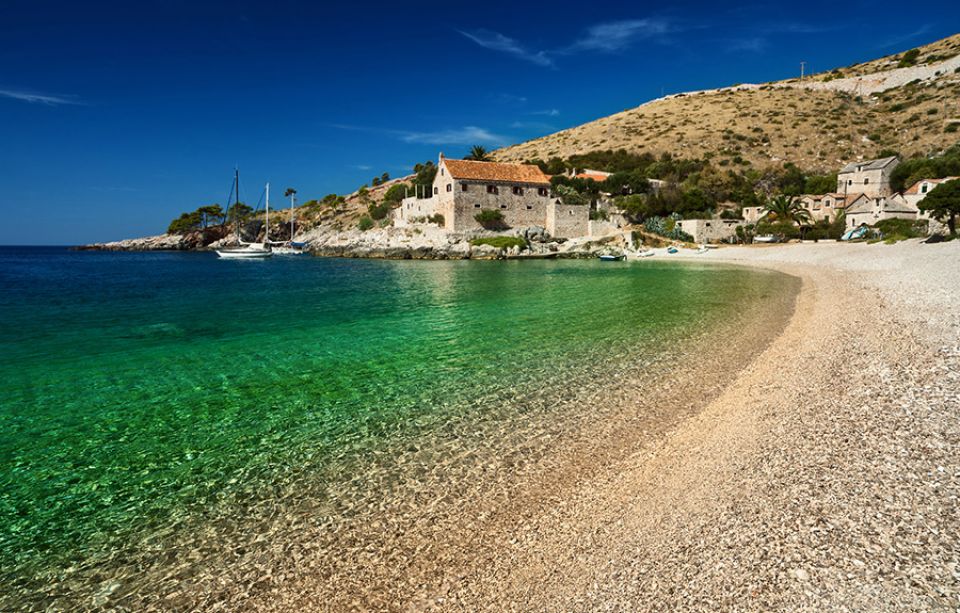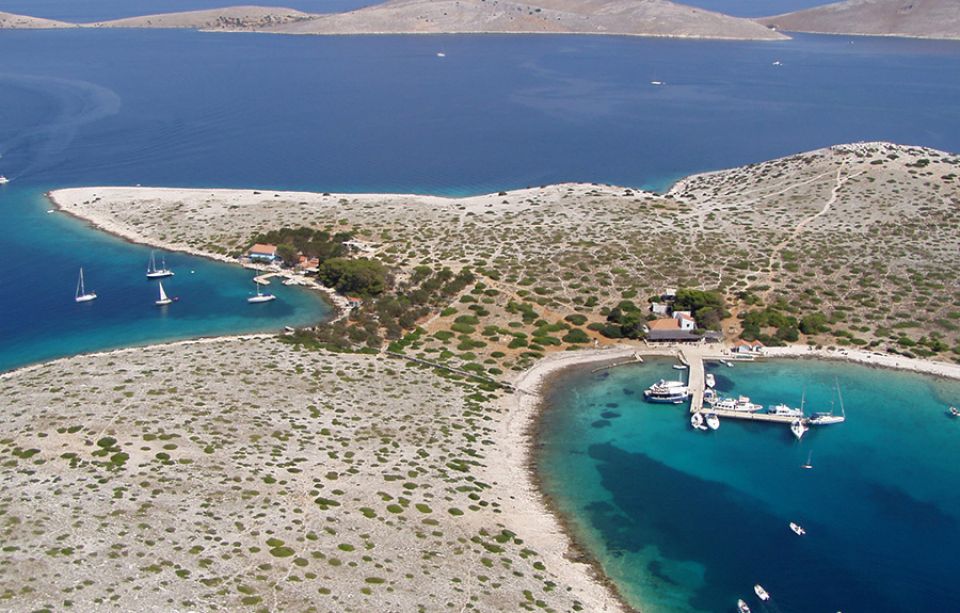Croatia
POPULATION: 4.390,751 (July 2002. est.) CAPITAL: Zagreb GOV"T TYPE: Presidental/Parliamentary Democracy INDENPENDENCE: 25 June 1991 (from Yugoslavia) GDP: $38,9 billion (2002 est.) CURRENCY: Kuna (HRK) RELIGIONS: Roman Catholic 76,5%, Orthodox 11,1%, Muslim 1,2%, Protestant 0,4%, other and unknown 10,8% (1991) LANGUAGES: Croatian 96%, other 4% (including Italian, Hungarian, Czech, Slovak and German).
TIME: GMT/UTC plus 1 hour , ELECTRICITY: 220V, 50Hz WEIGHT & MEASURES: Metric HEALTH RISKS: none VISAS: Citizens of the following countries can enter Croatia for stays of up to 90 days without a visa: Australia, Canada, Ireland, Israel, Japan, New Zealand, the UK, the USA and most continental European countries. The Adriatic coast of Croatia is ideal for yachting, sea kayaking and diving (currently a rapidly growing industry in Croatia). Hiking and rock climbing opportunities are abundant. Currently, Croatia’s only international airport is just outside the capital, Zagreb. However, connecting flights to Dubrovnik, Split, Zadar and many other destinations are readily available. The Croatian bus & train systems are extensive and very reasonably priced. There is also a ferry system that operates along the coast. The highway system is currently being expanded to reflect the increased density of international traffic.
NATIONAL PARKS: Brijuni National Park, Kornati National Park, Krka National Park , Mljet National Park, Paklenica National Park, Plitvice National Park, Risnjak National Park, Sjeverni Velebit National Park DALMATIAN ISLANDS: The Dalmatians, located off the coast of Croatia, are comprised of thousands of islands, large and small. Here you can experience the rich heritage of the region, exploring traces of thousands of years of European civilizations (Greek, Roman, Illyrian, Croatian and Venetian). Unique Baroque and Renaissance architecture, ancient settlements, stunning beaches and national parks. The island of Hvar, find in the Middle Dalmatian group, is considered one of the top tourist destinations in Croatia. It boasts the sunniest climate all of the Croatian islands as well an unparalleled variety of natural attractions, and numerous annual cultural events. The island is 68 km long, and the biggest width is 10,5 km. Hvar lies between islands Brac, Vis, Korcula, penninsula Peljesac and Makarska Riviera. BRAC is the largest Dalmatian island, featuring what is considered the most beautiful beach on the Adriatic: Zlatni Rat , located in the ancient settlement of Bol. KORCULA, one of the larger Croatian islands, was home of the famous explorer, Marco Polo. His house has been preserved in the old city centre of his native settlement, KORCULA. Often described as a "green paradise", the island of MLJET is located 17 miles from Korcula. Its environment of pine and oak woods is unique to the region, together the island"s two salt lakes: Veliko and Malo Jezero. Another major attraction to this island are Walls of Ston, originally created by citizens of Dubrovnik (on the coast) for protection against enemy attacks. Anglers in search of tuna and trophy fish should not miss the opportunity to visit LASTOVO. Lastovo, a group of 46 small islands and surrounding sandbanks is considered a fisher’s paradise. Lastovo is also known for its famous folk carnival, in which local residents are enthusiastic participants. OMIŠ Nestled at the foot of the mountainous canyon, where the freshwater Cetina River spill into the Adriatic Sea, lies the historic City of Omis. Traditionally, a small post city of courage and strength for its ability to defend against foreign invaders throughout the ages. Visitors to Omis will be delighted by its smooth pebble and sandy beaches. Beyond the city proper, and into the canyon, discover the lush emerald green waters of the Cetina River, featuring the Gubavica waterfalls. Radmanove Mlinice (3 miles up the river canyon from Omis) is a paradise for outdoor enthusiasts to enjoy kayaking and white-water rafting. Those visitors interested in exploring monuments to the region’s long and diverse heritage will find many sights to occupy their imagination, including the historic Fortress Starigrad and the relic of the 16th century St. Peter’s Church. SPLIT is the economic and administrative centre of the Dalmatian region, having a population of about 200.000. This, however, does not diminish its importance as a cultural centre of the region, as well as its geographical significance as the getaway to the islands of the Croatian Adriatic. (Split is a busy sea port, with regular ferry service to the islands.) Split contains many landmarks of historical and cultural significance, including Diocletian’s Palace, the Croatian National Theatre and numerous museums dedicated to art, archaeological monuments, religious and secular examples of human achievements. The city of DUBROVNIK is located at the southernmost point of the Croatia on the coast of the Adriatic Sea. Its illustrious Gruz harbour, ancient and classic architecture and world-renowned natural beauty has earned it the reputation of the “city of stone and light" as well as UNESCO world heritage designation. From its cobblestone streets to the 2 km long town wall, Dubrovnik is an ideal location for sightseeing. Among the sites worth visiting are the Rector’s Palace, the Cathedral Vault, the Franciscan monastery which boasts a closer dating back to the 14th century and one of the oldest synagogues in Europe, located in the city centre and dating back to the 15th century.
Croatian culture extends into every artistic area, from sculpture of painting to literature. Croatian music is a lively mix of the styles and instruments. Cuisine changes from region to region but tends to the hearty and delicious. Wine is produced in almost every Croatian region. Croatia is a country of rich history. Since Roman times, it has been the crossroads between east and west. Colonized by the Greeks as early as the 4th century BCE, the Roman Empire later overtook the rule over the area, and this is when Croatia became the dividing line between the Eastern and Western Roman Empires. Today, the city of Split is home to the greatest Roman ruin in Eastern Europe: the place of the Emperor Diocletian. After the collapse of the Western Roman Empire in the 5th century, Slavic tribes from present-day Poland migrated to the area. The first Croatian state was established by King Tomislav in the year 925. In the early 16th century, Croatia was threatened by the Turks and turned northwards to the Habsburg Empire of Austria for protection. Northern Croatia remained semi-autonomous state within the empire until 1918. At the same time, the Dalmatian coast was taken by the city state of Venice who held it until Napoleon took the area at the end of the 17th century. In 1835, still as the member of Hapsburg Crown, Northern Croatia came under the rule of Austro-Hungarian Empire and a political and cultural revival began. After the WWI, Croatia became part of Yugoslavia, and it remained a part of Yugoslavia until its declaration of independence in June 1991. This declaration was followed by a brief period of internal upheaval culminating later, and the country was internationally recognized and admitted into the UN in May 1992.





